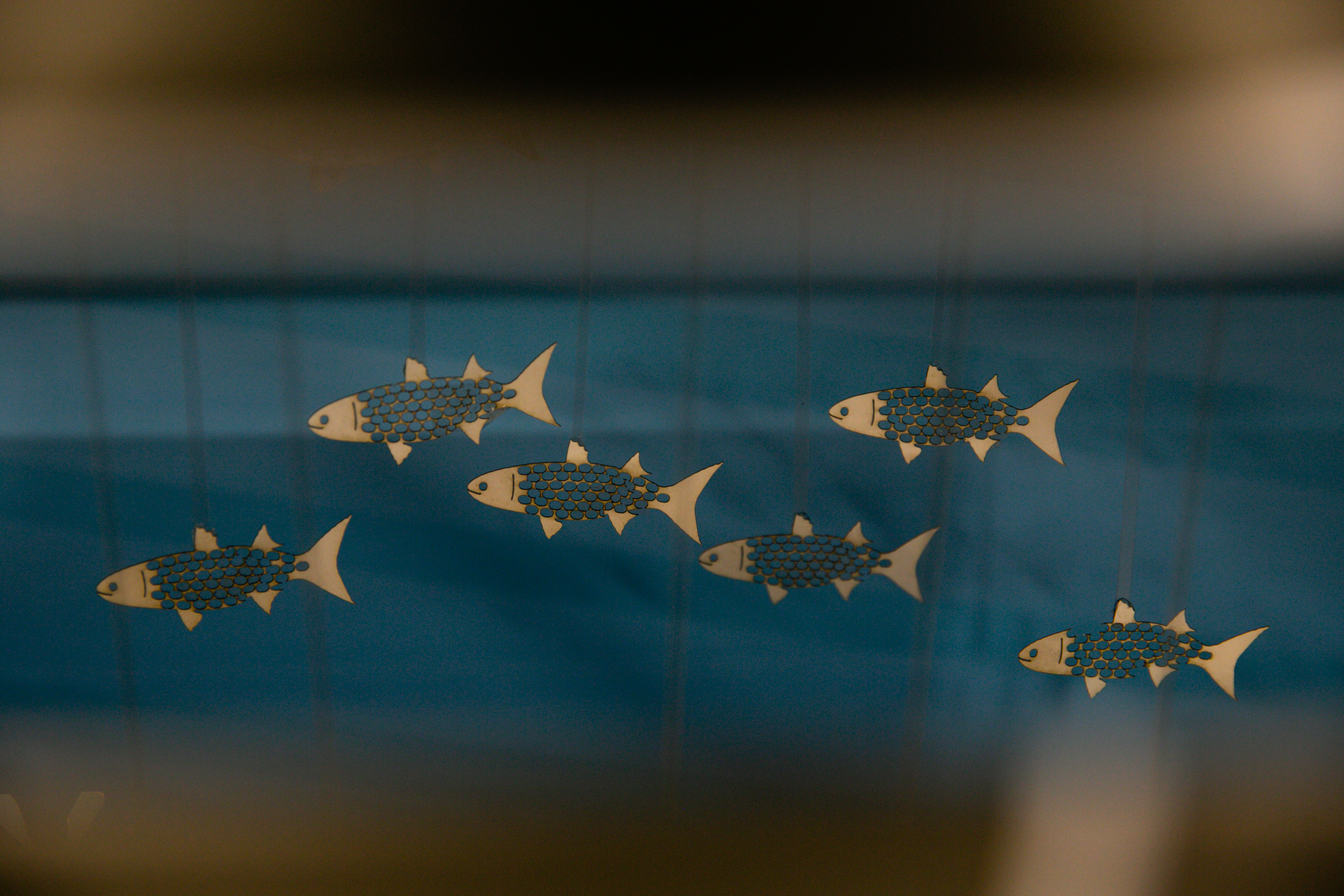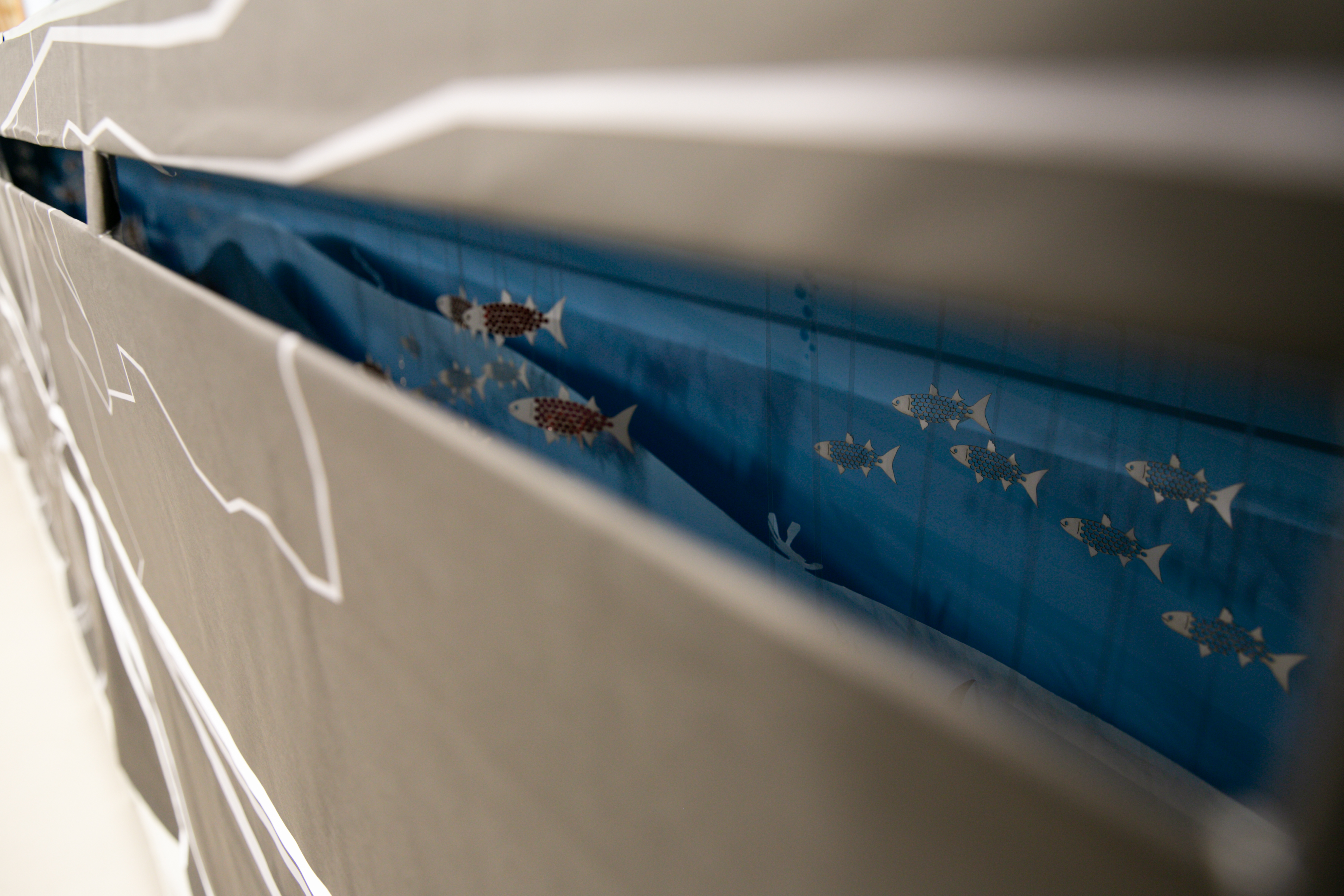
A euryhaline fish (able to survive in both saltwater and freshwater).
| With the rising temperature, worsening pollution, and decreasing quality of the water, flathead grey mullets found safety in numbers. Their new traits enable them to work in unison and take care of their habitats together, in the safety of their schools. External pressures and toxins have changed their bodies. The flathead grey mullet has chromatophores — receptor cells that expand and contract in response to pollutants entering the bloodstream. The result is momentary changes to the color of the fish. The species’ endocrine system is affected by these pollutants, and their coloration deters other species around them. The environmental pressures have caused other evolutionary changes too. The flathead grey mullet has developed scales that function like suction cups, enabling it to form symbiotic relationships with other species. One such example it its alliance with the Asian clam. The newly symbiotic flathead grey mullets filter pollutants out of the water, so keeping them around is beneficial to other species and to the stream itself. The mullet also benefits from the symbiosis, as the larvae of the clam help purge toxins from its body before being expelled from it. Furthermore, the mullet uses its suction-cup scales to collect the clam’s shells, which serve as a kind of armor. |
Dafna Hofman, Ortal Izhak Baruch




